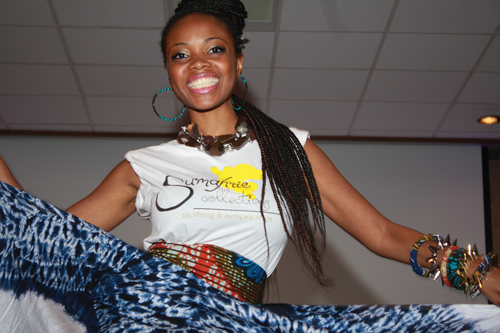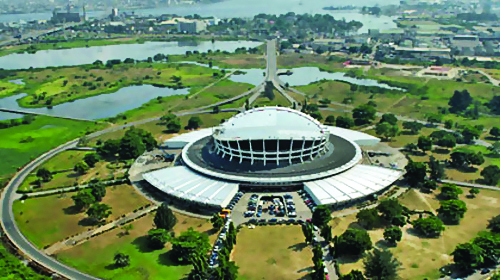Lagos is a port city and the most populous city in Nigeria. Officially, the population of Lagos was last recorded at 7,937,932. Lagos is the second fastest growing city in Africa and the seventh fastest in the world.Lagos was originally inhabited by the Awori subgroup of the Yoruba people.
Under the leadership of their Olofin, the Awori moved to an island now called Iddo and then to the larger Lagos Island. In the 15th century, the Awori settlement was attacked by the Benin Empire following a quarrel, and the island became a Benin war-camp called “Eko” under Oba Orhogba, the Oba of Benin at the time. Lagos is a metropolitan area which originated on islands separated by creeks, such as Lagos Island, fringing the southwest mouth of Lagos Lagoon while protected from the Atlantic Ocean by long sand spits such as Bar Beach, which stretch up to 100 km east and west of the mouth. From the beginning, Lagos has expanded on the mainland west of the lagoon and the conurbation, including Ikeja and Agege, now reaches more than 40 km north-west of Lagos Island. Some suburbs include Ikorodu, Epe and Badagry, and more local councils have recently been created, bringing the total number of local governments in Lagos to 57.
Lagos Mainland Most of the population lives on the mainland, and most industries are located there too. Lagos is known for its music and night life, which used to be located in areas around Yaba and Surulere In recent years more night clubs have sprung on the island, making the island, particularly Victoria Island, the main nightlife attraction. Lagos Mainland districts include Ebute-Meta, Surulere, Yaba (location of the University of Lagos and Ikeja, site of the Murtala Muhammed International Airport and capital of Lagos State.Greater Lagos includes Mushin, Maryland, Somolu, Oshodi, Oworonsoki, Isolo, Ikotun, Agege,Iju Ishaga, Egbeda, Ketu, Bariga, Ipaja, Ajah and Ejigbo. The city of Lagos is the main city of the south-western part of Nigeria. Some rivers, like Badagry Creek, flow parallel to the coast for some distance before exiting through the sand bars to the sea. The two major urban islands of Lagos in Lagos Lagoon are Lagos Island and Victoria Island.
These islands are separated from the mainland by the main channel draining the lagoon into the Atlantic Ocean, which forms Lagos Harbour. The islands are separated from each other by creeks of varying sizes and are connected to Lagos Island by bridges. The smaller sections of some creeks have been sand filled and built over, however. The Islands of Lagos.. Lagos Island contains a central business district. This district is characterized by high-rise buildings. The island also contains many of the city’s largest wholesale marketplaces (such as the popular Idumota and Balogun markets). It also has the National Museum of Nigeria, the Central Mosque, the Glover Memorial Hall, Christ’s Cathedral (CMS), and the Oba Palace.
Though formerly in a derelict condition, Lagos Island’s Tinubu Square is a site of historical importance; it was here that the Amalgamation Ceremony that unified the North and South protectorate to form Nigeria took place in 1914. Ikoyi Ikoyi is situated on the eastern half of Lagos Island and joined to it by a landfill. Ikoyi is also connected to Victoria Island by a bridge carrying a main road over a Five Cowrie creek. Ikoyi housed the headquarter of the federal government of Nigeria and other buildings owned by the government -including the old federal secretariat complex. The complex today is on reestablishment. In Ikoyi there are military and police barracks, a top-security prison and a federal high court of Nigeria. Ikoyi also has a number of hotels, night clubs, a recreational park and one of Africa’s largest golf courses. Originally a middle class neighbourhood, in recent years, it has become a fashionable residential enclave for the upper middle class to the upper class.
There are also commercial activities in Ikoyi which is spotted in increasing number of offices, banks and shopping complexes. The commercial section is concentrated in the South-West. Victoria Island Victoria Island with its annex is situated to the south of Lagos Island. It has expensive real estate properties and for that reason, many new luxury condos and apartments are blooming up everywhere.
Along with Ikoyi, Victoria Island occupies a major area in the suburbs of Lagos which boasts of several sizable shopping districts. On its sea shore along the Atlantic front, there is environmentally reconstructed Bar Beach. Iddo Across the main channel of the lagoon from Lagos Island, there is a smaller settlement called Iddo. Iddo is also a railroad terminus and it is situated on the mainland. It is now connected to the mainland like a peninsula. Three major bridges join the island to the mainland. They are the Carter Bridge which start from Iddo, the Eko Bridge (formerly called the Second Mainland Bridge) and the Third Mainland Bridge -which passes through densely populated mainland suburbs through Lagos lagoon. Eko Atlantic City Eko Atlantic City is a planned 21st-century city, intended to be built on land reclaimed from the Atlantic Ocean. Already, most of the land has been reclaimed. The proposed development is targeting 400,000 residents and 250,000 commuters flowing daily to the island.
The project is planned to return the coast to its position in the 1950s and 1960s, reversing damage done by erosion. Administration Lagos is a State made up of 57 Local Government administrations and controlled by a central State administration led by the current Lagos State Governor, Raji Fashola. Metropolitan Lagos is not a municipality and has therefore no overall city administration. In fact there are 16 Local Government administrations that control Lagos metropolis. The Municipality of Lagos, which covered Lagos Island, Ikoyi and Victoria Island as well as some mainland territory, was managed by the Lagos City Council (LCC), but it was disbanded in 1976 and divided into several Local Government Areas (most notably Lagos Island LGA, Lagos Mainland LGA and Eti-Osa LGA. The mainland beyond the Municipality of Lagos, on the other hand, comprised several separate towns and settlements such as Mushin, Ikeja and Agege. In the wake of the 1970s Nigerian oil boom, Lagos experienced a population explosion, untamed economic growth, and unmitigated rural migration. This caused the outlying towns and settlements to develop rapidly, thus forming the Greater Lagos metropolis seen today. The history of Lagos is still evidenced in the layout of the LGAs which display the unique identities of the cultures that created them. Lagos Climate Lagos has a tropical wet and dry climate that borders on a tropical monsoon climate .
Lagos experiences two rainy seasons, with the heaviest rains falling from April to July and a weaker rainy season in October and November. There is a brief relatively dry spell in August and September and a longer dry season from December to March. Monthly rainfall between May and July averages over 400 mm (15.7 in), while in August and September it is down to 200 mm (7.9 in) and in December as low as 25 mm (1.0 in). The main dry season is accompanied by harmattan winds from the Sahara Desert, which between December and early February can be quite strong. The highest maximum temperature ever recorded in Lagos was 37.3 degrees Celsius and the minimum 13.9 degrees Celsius. Tourism Lagos, subsequent to the re-modernization project achieved by the current administration of Governor Raji Babatunde Fashola, is gradually becoming a major tourist destination, being one of the largest cities in Africa and in the world. Lagos is currently taking steps to become a global city.
The 2009 Eyo carnival (a yearly festival originated from Iperu Remo, Ogun State) which took place on 25 April, was a step toward world city status. Currently, Lagos is primarily known as a business-oriented and a fast paced community.[25] Lagos has a number of sandy beaches by the Atlantic Ocean a few are Badagry beach, Eleko beach, Elegushi, Alpha beach. Two of the popular beaches include Bar Beach and Lekki Beach. Lagos has a variety of hotels ranging from three star to five star hotels. Other places of interest include The Tafawa Balewa Square, Festac town, Lekki Conservation Centre, The Remembrance Arcade and the Slave Jetty in Badagry For the newcomers to Lagos, one of the many ways to get around is look at some of the local sites like VConnect.com and LostinLagos.com.
They are like the local Yelp services. You can explore the Nigerian cuisine, Lebanese cuisine, Chinese cuisine and various other cuisines by looking up these local info websites. Some of the popular hotels include Welcome Centre Hotels, Sheraton Hotel and Towers, Federal Palace Hotel, Stop Over Motels, Ikoyi Hotel, Sofitel Lagos Moorhouse Ikoyi, Eko Hotels And Suites, and The Palmview Manor. Visitors are mostly attracted to Nigeria’s rich culture, entertainment scenes and vitality which Lagos city offers. Tourist attractions include Oba’s Palace, the Nigerian National Museum, Shrine of Fela, the beach resorts.






































